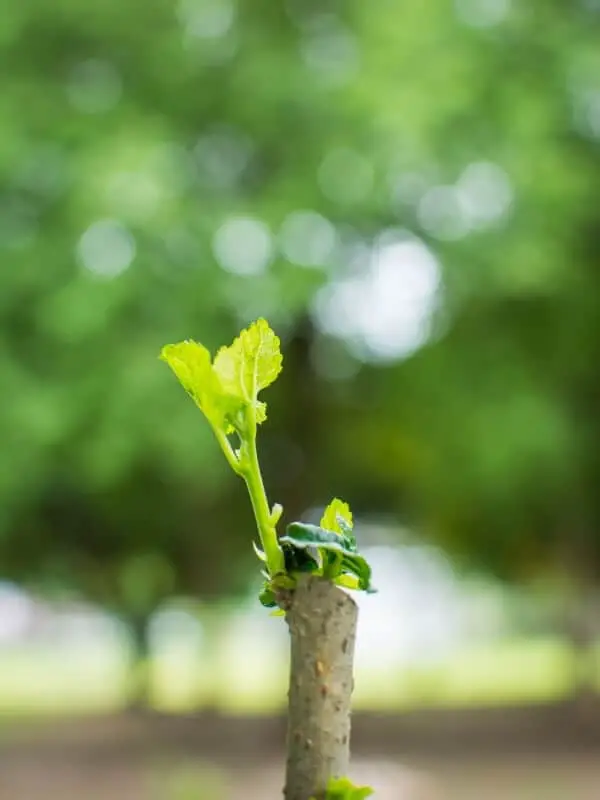Olive trees have become a trend these days. Everyone’s keeping a variety of this plant indoors as either Bonsai’s or other shorter species, and outdoors for much longer lengths. What’s not to love about olive trees? These trees have a lot of ancient history, dating back 5000 years. The oldest olive tree in the world resides in the city of Bethlehem, in a little village called Al Walaja. Ever heard the saying bearing out an olive branch? This is because the olive tree is a symbol denoting peace and harmony.

This kind of energy is one to bring into your home. It gives your home a chic bohemian with a hint of cool. You are probably reading this article because you would like to grow an olive tree of your own. Therefore, in this article, I will be breaking down the steps to take when planting an olive tree.
Olive trees do bear fruits but there’s more than one way to propagate plants. The sexual method of reproducing olive trees involves seeds which might take a long period before you grow a full tree. Besides, when planting a seed, you would not be expecting to grow an exact replica of the parent tree the seed came from. The seed’s genetics will vary.
The asexual method of growing olives involves the use of stem cuttings to grow a new plant that will be an exact replica of the tree it is cut from. It’ll have the same genetic code and it will grow much faster. This is why many horticulturists and DIYers prefer this method.
 To grow olive trees (Olea Europea) through the cutting method, you’ll be needing the following materials:
To grow olive trees (Olea Europea) through the cutting method, you’ll be needing the following materials:
- Pruning Shears – This will be used to make the necessary stem cutting.
- Some Rooting Hormone (Preferably IBA) – This is essential for a successful root formation process.
- Sphagnum Peat Moss and Potting Mix– This serves as a root growth medium.
- Refrigerator Bag – This is used to wrap the planted stem.
- Fertilizer – This provides nutrients needed for plant growth.
- Containers – This is used to grow the stem cutting.
Here’s the step-by-step guide to follow when planting an olive tree via stem cuttings.
- First, you have to select the right branch to cut. The best cuttings to choose from are either softwood or semi-hardwood cuttings. Softwood cuttings can be gotten from stems that are yet to mature and are most likely new growth. Semi-hardwood cuttings are those stems that have significantly matured but haven’t hardened yet. These stem cuttings are preferable because they give a higher chance of success when planted.
- Secondly, once you’ve identified the branch you’d like to cut, also ensure that it is about 9 to 12 inches long and .25 inches wide. The branch should have no flowers or buds on it and should probably have grown under full sunlight.
- Thirdly, make the cut with a clean and properly sanitized set of pruning shears. Strip about two-thirds of the branch of its leaves. Coat the stripped section with 0.1 percent IBA.
- Fourthly, plant it immediately in the container to prevent or reduce the impact of moisture loss. The growth medium should contain one part topsoil to one part peat moss. This is to ensure that the soil is well aerated, has an adequate water holding capacity, and has a lower bulk density.
- Finally, wrap the container and stem cutting with the refrigerator bag. Place the container on your window sill. Water the tree seedling with diluted liquid fertilizer.
Your olive tree should begin to root within three to four months. There you have it, growing an olive tree is not rocket science and is easy to do if you have the right tools needed for the job.
Factors to Consider when Propagating Olives via Stem Cutting
To increase the growth chances of your stem cutting, you should consider the following factors.
The Growth Media: To ensure the survival of your stem cuttings, make use of a mixture of peat moss and garden soil as they are well aerated and have a significant water holding capacity needed to ensure root formation.
Temperature: Naturally olives are found in warmer regions such as the Mediterranean and Africa. Therefore, to grow these roots, a minimum temperature of about 20oC favors early root development. The recommended USDA hardiness zone for olive tree growth is 9 or warmer.
The Rooting Hormone: The use of rooting hormones such as IBA solutions help the stem cuttings grow roots quickly.
Sunlight: Partial sunlight is best preferred when growing stem cuttings.
In conclusion, do not forget to regularly water your olive stem cutting and monitor its progress. Also, you might need to exercise some patience as growing olives using this method is a slow process, and no one’s more patient in the world than a farmer.
Good to Read : How to Air Layer Olive Trees
Want to know more about gardening ?
Fill in your email address in the form below and you'll receive all the latest updates directly in your in-box.
Thank you for subscribing.
Something went wrong.